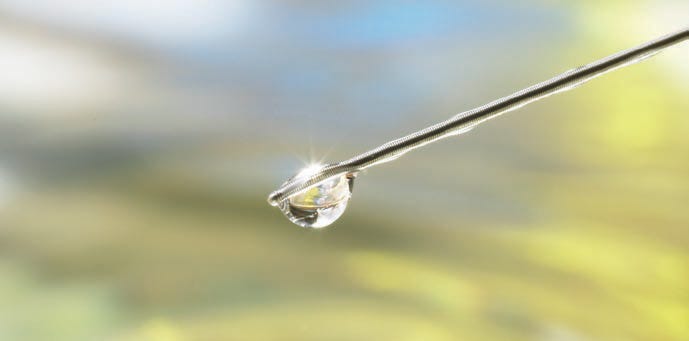Roundtable: Coating Development Focuses on Drug-Eluting, Antimicrobial Products
MPMN 25th Anniversary Coverage
December 6, 2010
|
Robert Hergenrother, senior director of research and development at SurModics |
|
Ingo Scheer, technical director at ioos systems LLC |
As part of our anniversary coverage, MPMN editor-in-chief Shana Leonard recently spoke with Robert Hergenrother, senior director of research and development at SurModics (Eden Prairie, MN), and Ingo Scheer, technical director at ioos systems LLC (San Diego), about the evolution of coatings and what's next for these technologies.
MPMN: In honor of MPMN's 25th anniversary, what do you cite as the most significant breakthrough in medical device coatings in the past 25 years?
Scheer: The introduction of drug-eluting coatings as well as new technologies that allow for the reproducible application of coatings on implants such as stents that have complex structures have been very significant breakthroughs in the medical device coating field in the last 25 years. Drug-eluting technology was so important because it minimized the risk of implant toxicity and inflammation and introduced new forms of treatment.
Hergenrother: I would also say the introduction of drug-eluting stents (DES), specifically the Cypher and the Taxus stents because they were the first ones to get to market. They demonstrated the power of combination products and they gave a dramatic improvement in clinical outcomes over bare-metal stents. But there are a lot of pieces that came together: the technology on the reproducible coatings and the review by FDA of the whole concept of combination products; the DES was one of the first ones that was under a lot of scrutiny. A second breakthrough was the introduction of lubricious, hydrophilic coatings for vascular access devices. Early on, they were a premium novelty, while now they are almost a requirement that physicians are expecting. If they're not there, you get questioned as to why that coating isn't there for access and allowing you to get to sites.
MPMN: Coating application methods are often as critical as the coating technology itself. How have application techniques changed over the past 25 years?
Hergenrother: Methods have evolved from dip coatings or broad sprays to some deposition methods that now can apply a coating solution or dry materials in very defined, precise patterns--which for stents and some other complex geometries is critical. The second piece of that is not only that the coatings are applied but also making sure they stay on and are durable. There are improvements in that area as well. SurModics has ultraviolet-curable coatings, which allow that process to go much faster than, say, a heat cure. Our methods provide a covalent bond from the coating to the surface, rather than just relying on adhesion, so that you can have that good durability.
Scheer: Dip coatings have widely been replaced by other coating technologies--for instance, spraying and dispensing or printing techniques that allow for a more precise control over film thickness and especially integrity. Small and complex substrates can now be coated with microspray techniques, leading to more-satisfactory results. And microspray techniques allow the more precise application of the coating material to the substrates and, referring to the coating of stents, they lead to an improved integrity of the coating around the structure and promote longevity of the coating.
MPMN: Among the biggest coating demands from medical device OEMs these days are antimicrobial coatings or antimicrobial capabilities combined with other functionality to deter infection. How are medical coating companies responding to this demand?
|
Hydrophilic coatings for guidewires have become common in the industry to help facilitate smooth navigation in the body. |
Hergenrother: You mentioned antimicrobials in combination with other functionality; some of these other technologies can be coated to be a little bit more passivating--to minimize colonization so that you don't get the adhesion of the bacteria onto the surface that maybe you would otherwise. The challenge with antimicrobials is the regulatory approval process and having studies that do show an increase in efficacy. If that requires clinical trials, there certainly is a cost associated with them, and there's the balance of what companies are economically able to bear. But with Medicare saying that it's not going to be reimbursing for some of these hospital-acquired infections, we are seeing a little bit more willingness of some of these companies to run clinical trials. So, for some of the lower-cost devices, to me, it's still sort of an open question as to how widely some of these antimicrobial options will be adopted.
Scheer: There are various approaches to how medical coating companies are responding to the demand. The first approach is applying antimicrobial coatings with bacteria-repellant properties, for instance hydrophobic or hydrophilic characteristics. Other models rely on polymer matrices eluting antimicrobial agents such as antibiotics. Today, there are also some companies that develop antimicrobial polymers characterized by a covalent linkage of an antimicrobial agent to a monomer prior to polymerization. Actually, one drawback of this approach is that macromolecules are comparably large and they are not able to act as fast as intended to have an antimicrobial effect.
MPMN: Do you think silver-based antimicrobials will continue to dominate in the future, or do you see promise in other technologies?
Scheer: Silver has proven antimicrobial properties and it's been used for a long time. However, several studies show that the biocidal action of silver is rather slow. Also, it has been found that silver may delay healing and in-growth. Furthermore, silver ions exhibit a cytotoxicity that accumulates in the body tissue. I think we need a variety of antimicrobial agents that are more promising, particularly in applications in which tissue in-growth is desired. A better approach for such applications may come from a variety of techniques, such as aiming to inhibit biofilm formation and promoting in-growth at the same time. This may be obtained by the minimization of bacteria by adding bacteria-repellant properties to the coatings--for instance, using nano-microstructures on the coating surface. Such an approach may be successful in combination with embedding small bacteria-killing molecules such as AMPs (antimicrobial peptides) into the polymeric matrix to prevent denaturation and to control release.
MPMN: Another prevalent issue in medical device design and development is that of facilitating implant acceptance and bone in-growth for more-durable, longer-lasting implants. What types of coatings could play a role in helping to achieve this stronger connection between bone and the implant?
Hergenrother: In terms of getting good integration of the device, there are more-simple ways of doing it--like roughening or making sure there's a texture that the bone can integrate into--but there are coatings that can help with that as well. Hydroxyapatite coatings are calcium based to help encourage bone growth. SurModics doesn't have much relevant technology that we're offering right now, but those are some of the future areas we're looking at. We're looking at possibly developing coatings with drugs presenting antimicrobials and ones that would encourage cell growth as well.
|
Coating application methods, such as spray coating (above), are often as critical as the coating technology itself. |
Scheer: The texturing of the surface is an important aspect, and surface structuring to promote in-growth and to prevent bacterial adhesion are also very important. It has been shown that the texture of a material has an influence on the biocompatibility and performance of a medical device. An implant could and should have morphological similarities to natural surfaces. A second approach would be the additional release of an antimicrobial substance that, in combination with the surface structure, would have desired antimicrobial properties that can adapt to the environment and is not prone to bacterial resistance. A piece of the antimicrobial agent could be AMPs, which I mentioned before.
MPMN: Innovation in the medical device industry is moving at a rapid clip, and suppliers and service providers such as your companies have to stay ahead of the pack. What's on the horizon for medical device coatings?
Scheer: ioos is working on technology to generate nano-micro textured coatings. These coatings have surface properties that minimize bacterial adhesion and have nano-micro features to improve in-growth and biomimicity of the surface. Also, we're embedding antimicrobial substances such as AMPs. We have begun applying the coating to bone screws, fixation pins, etc.
Hergenrother: We're always looking to develop new materials that would encourage drug delivery and keeping an eye out as to what are the new classes of therapies. Protein therapeutics are coming out. Further down the road are various gene-therapy-type treatments, and we're looking into whether those need to be incorporated into coatings eventually. So, what materials are going to be compatible with those types of drugs? There's also the concept of technologies that encourage cell attachment and even those for delivering cells to a surface and having the appropriate matrix that keeps the cells healthy when they get to the site. In the vascular space, that could be encouraging endothelial growth. In other devices as well--such as the treatment of aneurysms in the neuro space--you want to make sure you get a good clean sealing of the aneurysm neck, including the endothelial layer there, as well as cells on other parts of the body. Coatings can encourage this with some of the potential peptide sequences. For the service providers, there's also always the need for increased efficiencies in manufacturing so that medical device companies can increase throughput of their factories and hopefully help speed to market even on existing coatings.
You May Also Like






